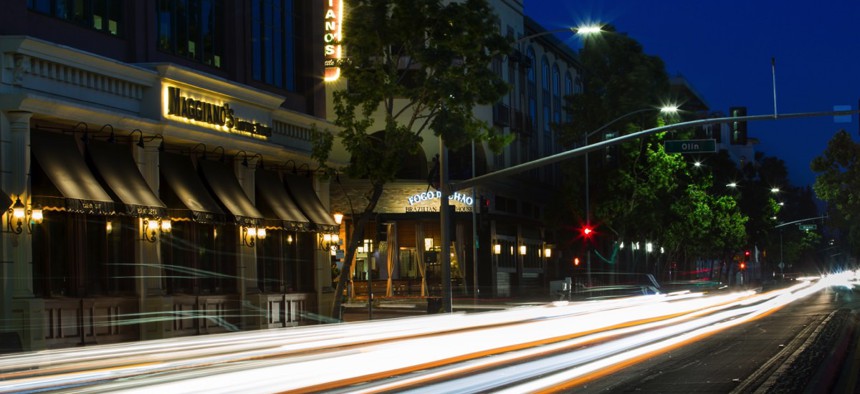Will a New Push to Bring Automated Speed Enforcement to California Succeed?

San José, California
Previous attempts to allow the use of speed cameras in the Golden State have failed. But advocates, including leaders in San Francisco and San José, are hoping to change that.
Officials in the cities of San José and San Francisco want California state lawmakers to amend the state vehicle code to permit automated speed enforcement on a pilot basis in their jurisdictions.
Unlike red-light cameras, automated speed enforcement has never been authorized under the code, so San José Mayor Sam Liccardo, San Francisco Mayor Ed Lee and the San Francisco Municipal Transportation Agency hope to show the technology reduces speed-induced traffic injuries and deaths.
On Wednesday, State Assemblyman David Chiu put forward a bill, the Safe Streets Act of 2017, that would implement a five-year pilot only on streets that have seen injurious or fatal speeding collisions.
“There have been efforts in the past by different assemblymembers and senators to propose legislation, but it hasn’t been adopted yet,” Laura Wells, San José’s deputy director of transportation, told Route Fifty in a phone interview on Thursday. “This effort is a collaborative effort reintroducing that request, and we think the time is right.”
Automated enforcement uses cameras equipped with vehicle speed sensors to photograph license plates of automobiles traveling above a set threshold. Already, 142 communities in 14 states and Washington, D.C., use automated speed enforcement to keep more drivers from going 10 m.p.h. over the speed limit, limit the number of tickets issued and reduce deadly collisions.
In the last three years for which there is data, 2013 through 2015, San José witnessed between 40 and 60 traffic fatalities annually, and they’re on the rise.
“The economy has rebounded. More people are on the road,” Wells said. “We have resource challenges in our Police Department, but positive movements are being made there in terms of growing officers in that department.”
The push for automated speed enforcement in California has been a top legislative priority for pedestrian and bicycle advocates, public health organizations and victims of collisions and their families.
“This safety legislation would enable cities to adopt a proven technology that will make our streets safe for everyone,” Tony Deng, executive director of California Walks, said in a statement.
Lowering vehicle speeds improves collision survival rates to the degree that someone hit by a car traveling 30 m.p.h. in a 25 m.p.h. zone is twice as likely to be killed.
“Automated Speed Enforcement can play a key role in helping make our cities safer, particularly for our pedestrians and bicyclists, seniors and children,” Liccardo said in the announcement.
“We need to explore all opportunities to protect the most vulnerable users of our streets, and I’d like to thank Assemblymember Chiu, Mayor Lee and our many other partners for their support of piloting this proven technology in our two cities.”
In the Bay Area, speed cameras would be triggered by cars traveling 10 miles over the posted speed limit and result in $100 citations. Data on reductions, or lack thereof, in speed and collision occurrences over time would be reported back to the state legislature, per the bill.
San José and San Francisco are both early Vision Zero cities, meaning they’ve adopted a set of international traffic safety measures intended to educate residents, enforce serious traffic violations and make streets safer.
"In San Francisco, we want communities where people can safely work, shop, play and live," Lee said in a statement. "For that to happen, we need to enforce speed limits on our city streets. Automated Speed Enforcement will allow us to realize that goal, along with helping us eliminate all traffic fatalities as part of our Vision Zero plan."
Dave Nyczepir is a News Editor at Government Executive’s Route Fifty and is based in Washington, D.C.
NEXT STORY: Troopers Use ‘Big Data’ to Predict Crash Sites






